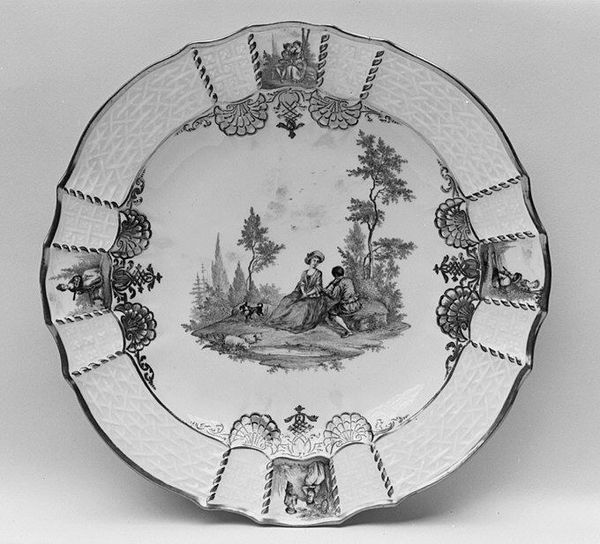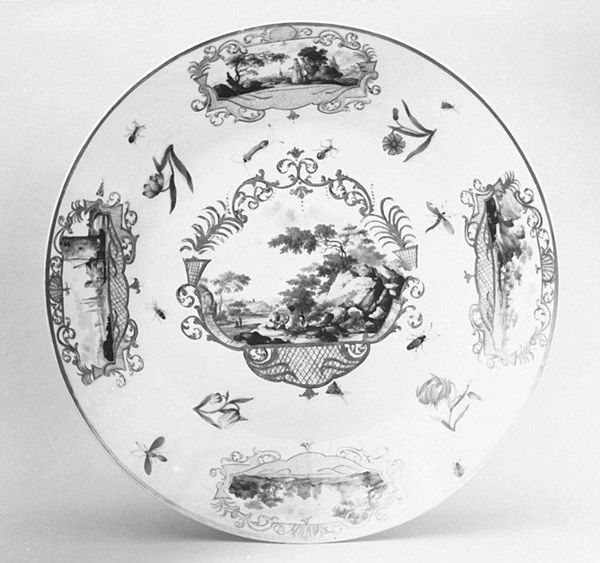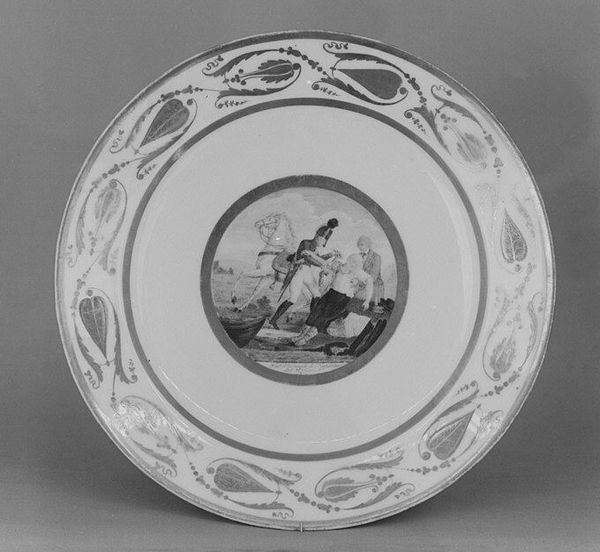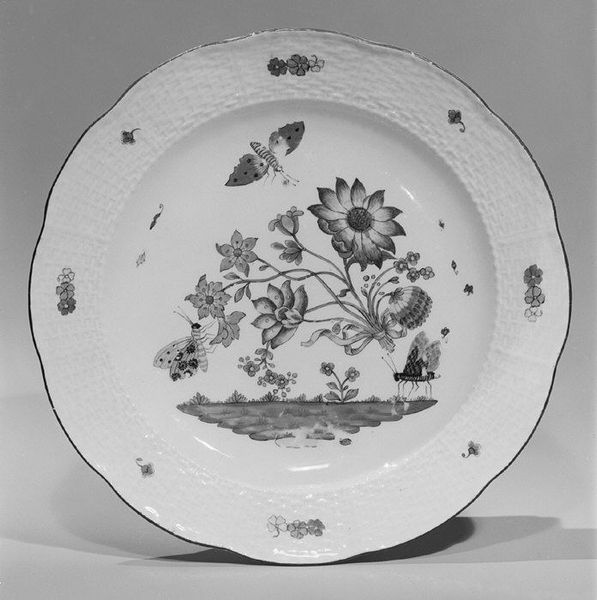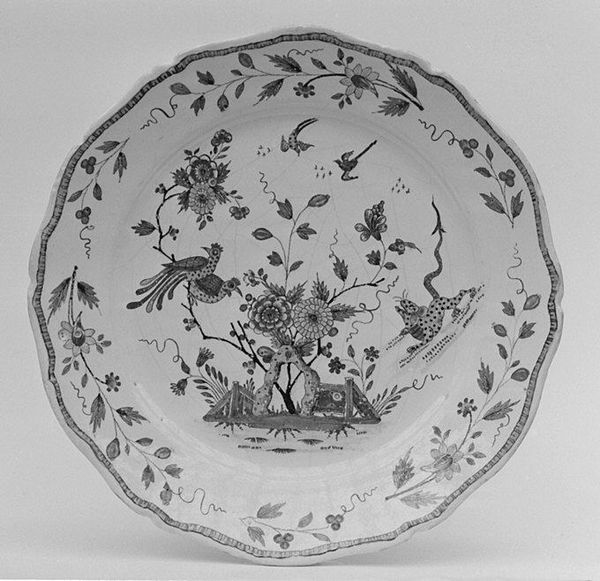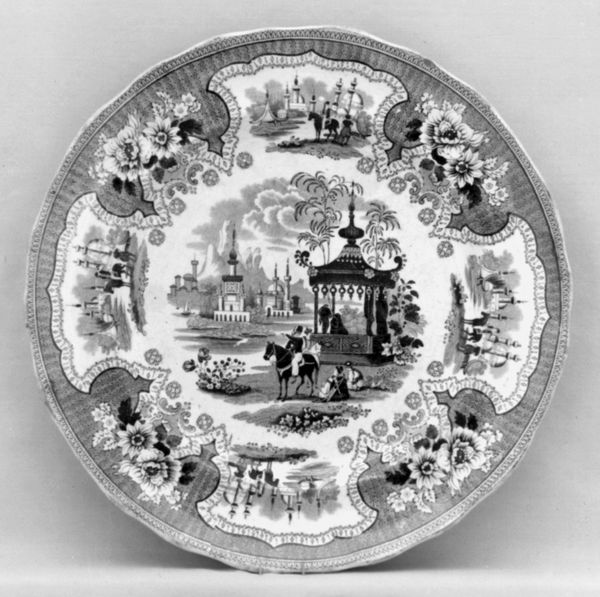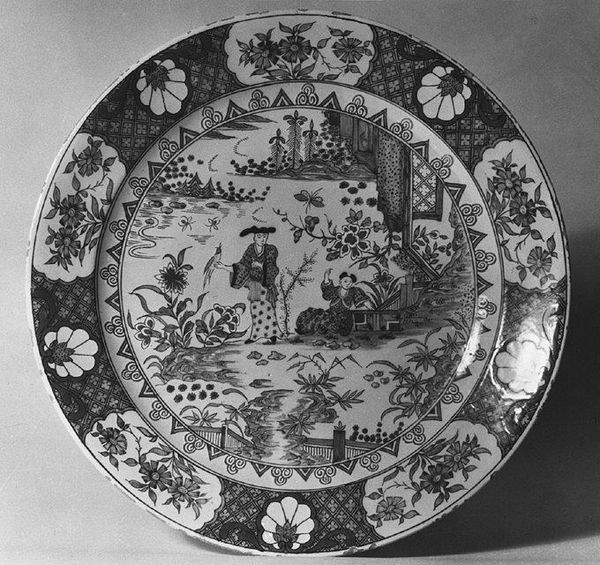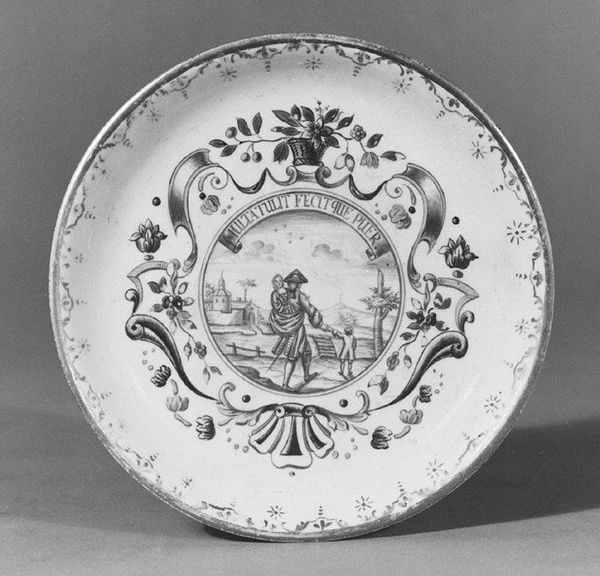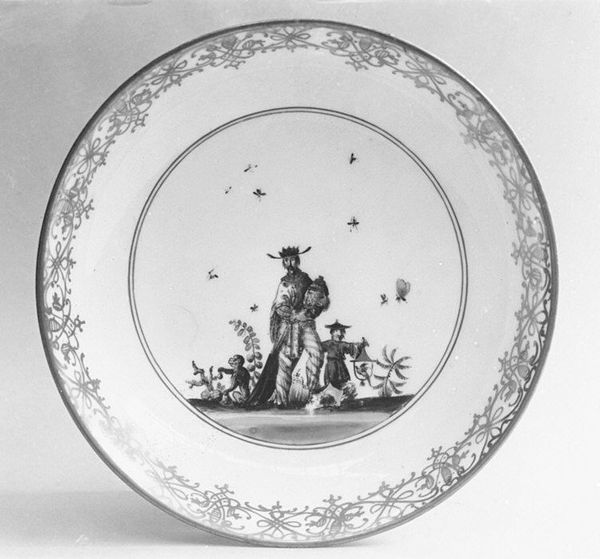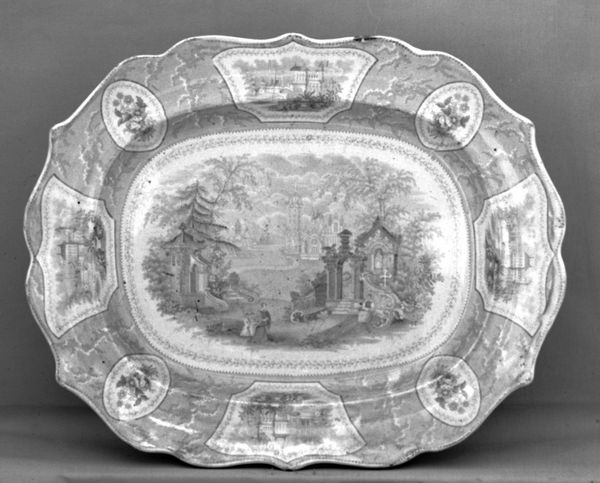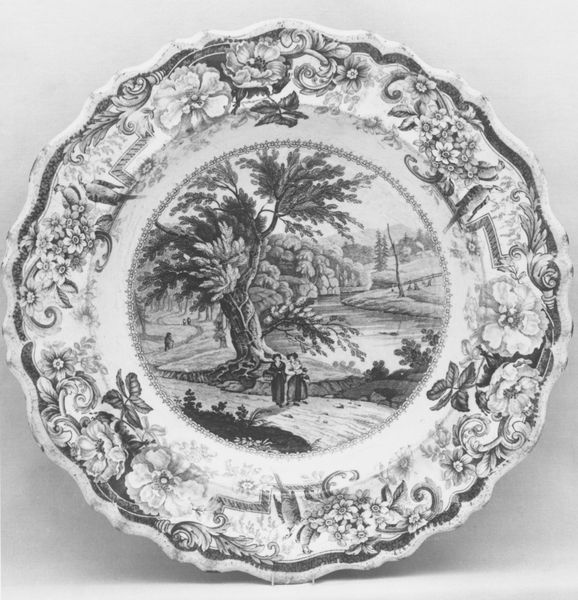
Dimensions: Diameter: 9 1/2 in. (24.1 cm)
Copyright: Public Domain
Curator: Here we have one of a pair of 19th-century porcelain plates, crafted at the Meissen Manufactory. Editor: It's strikingly delicate! I'm immediately drawn to the detailed, almost miniaturist approach to rendering these idyllic scenes. Curator: These plates are exemplary of Rococo decorative art. The central image on each plate depicts figures in a landscape, surrounded by smaller vignettes and ornamental designs. They speak to the aristocratic pursuits and leisure idealized during the period. Editor: Absolutely. Porcelain itself was such a luxury item, think about the intense labor required from the mining of the kaolin to the painting and firing processes. Owning a pair of plates like these would broadcast significant wealth. What's also intriguing is the central image, this kind of idealized leisure felt really important to those in power. Curator: Exactly! It highlights the patron’s desire to be associated with refined culture and artistic patronage. Consider the social context. This wasn't simply tableware. These objects reinforced hierarchies and societal norms. The act of displaying fine objects like these, demonstrated good taste but more importantly, reinforced power. Editor: The crisp monochrome drawing must have demanded great skill. To imagine painting with such precision on a curved porcelain surface seems an enormous challenge, the control needed over the brush. Also, it really emphasizes the technical skills prioritized within these manufactories. Curator: Indeed, it signifies a complex web of labour, artistic skill, and social display characteristic of its time. The politics are inherent, in the control and management of the manufacture itself but also in the representation of leisure as a status symbol. Editor: Looking closely at its material reality offers clues about consumption and class—more than just beautiful objects, these plates really highlight those economic relationships, a history made visible by the skill involved in the making. Curator: I agree, examining its place in social history provides greater insight than appreciating its beauty alone. Editor: And understanding its creation in terms of labor and material provides context for why it came to have such social significance. Curator: Precisely, the duality provides for a deeper interpretation.
Comments
No comments
Be the first to comment and join the conversation on the ultimate creative platform.
